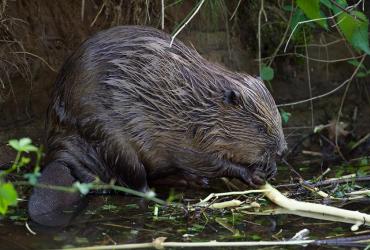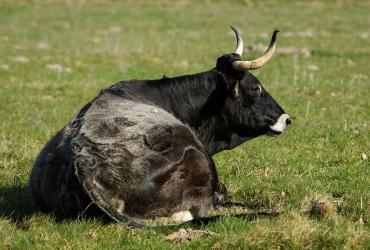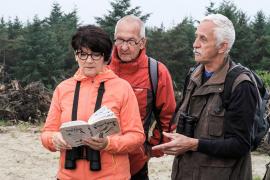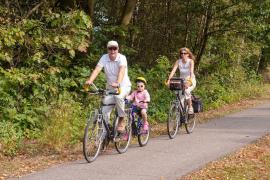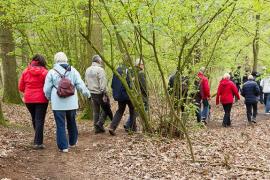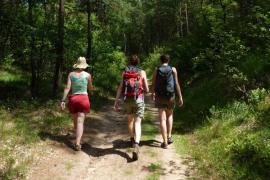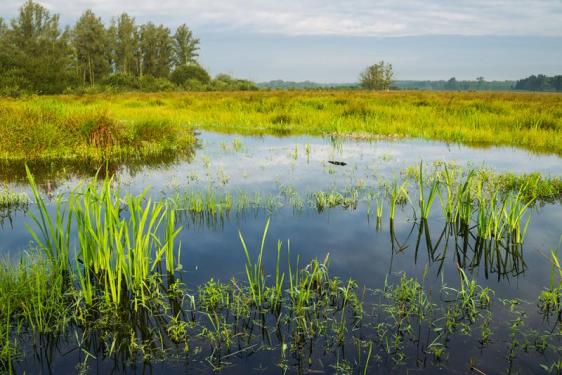
Climate buffers are used to make an area more climate-proof. They act as a kind of sponge that retains water and releases it when needed. This means that all kinds of damage and threats due to climate change can be reduced or compensated. The risk of flooding and the effect of prolonged droughts is reduced.
Furthermore, climate buffers can have a high natural value because they act as ecological links. That is how climate buffers can absorb biodiversity loss.
The wettest areas of the GrensPark Kempen~Broek will be developed into climate buffers. Agricultural land that is too wet is purchased, exchanged and transformed into wet nature. The farmers are given better and drier farmland in return. The land is chosen in such a way that one large nature reserve is created where the water management can be restored to its natural state and artificial drainage through ditches is stopped. This creates a continuous natural connection, attractive for hikers and cyclists, but vital for thousands of plant and animal species. The climate project Kempen~Broek wants to restore the throughflow marsh where possible, connects isolated nature areas with each other and retains valuable water better within them. By retaining clean seepage and rainwater for longer, natural riches can expand further.
The current climate buffer is located in the triangle Weert, Bocholt and Kinrooi. In Belgium, the ‘Smeetshof’ nature development project is part of the climate buffer. On the Dutch side, it is the nature reserves ‘Kettingdijk’ and ‘Wijffelterbroek’ of ‘Natuurmonumenten’. In creating a climate buffer in the ‘Weerterbos’, ARK worked together with the Peel and Maasvallei Water Board, the province of Dutch Limburg and the Limburg Landscape Foundation.

